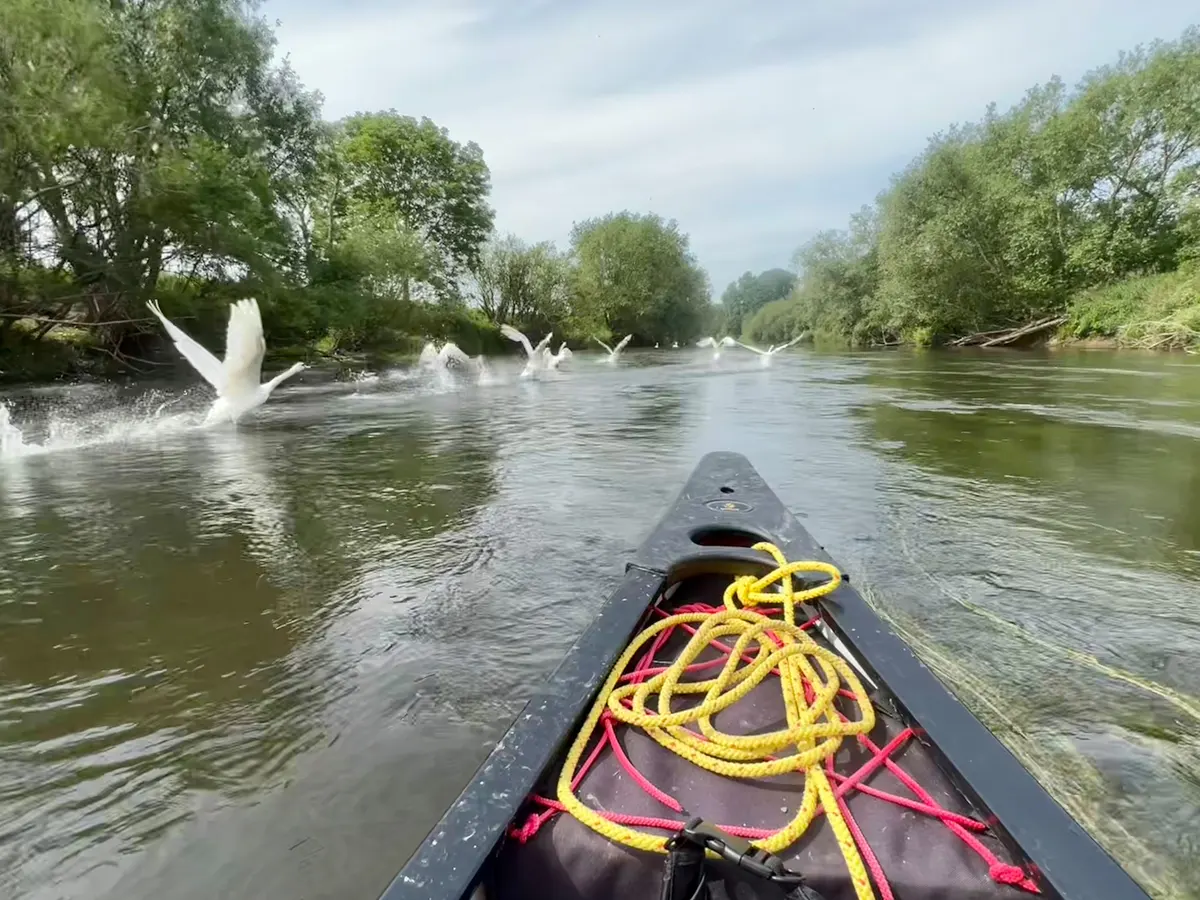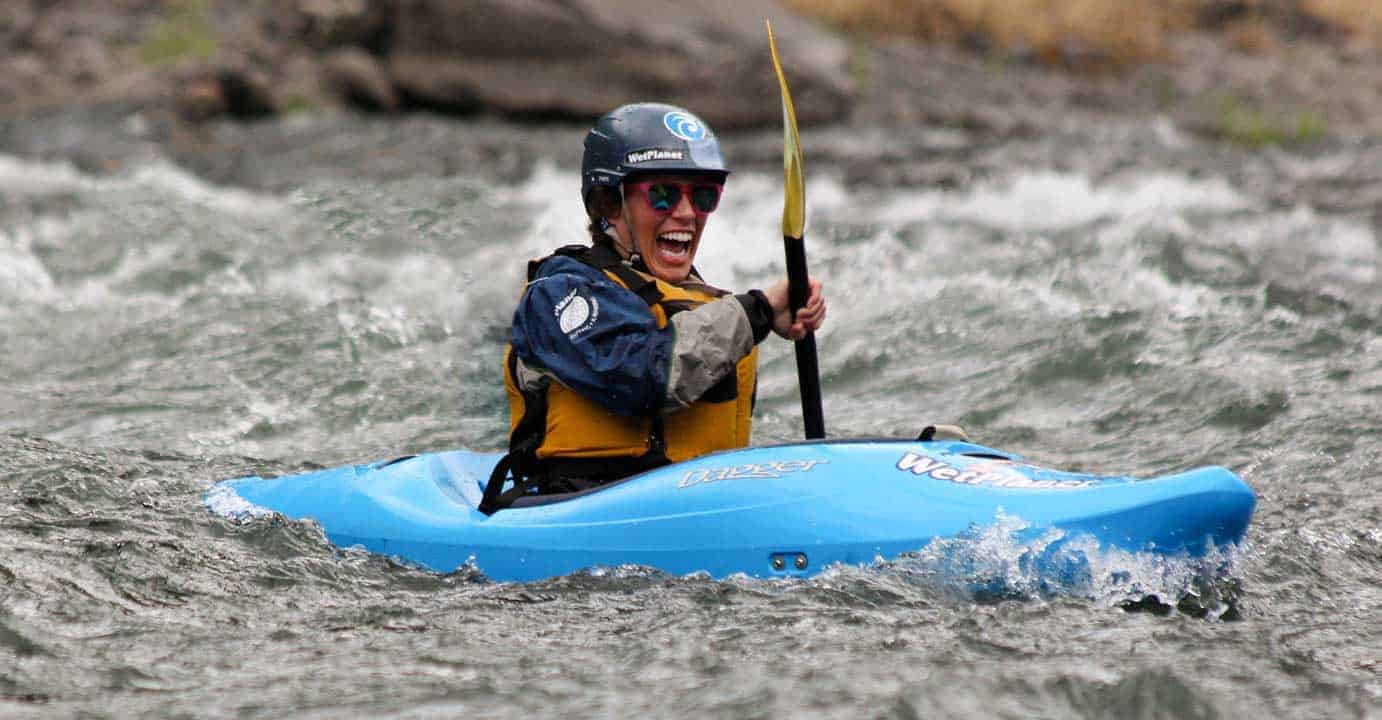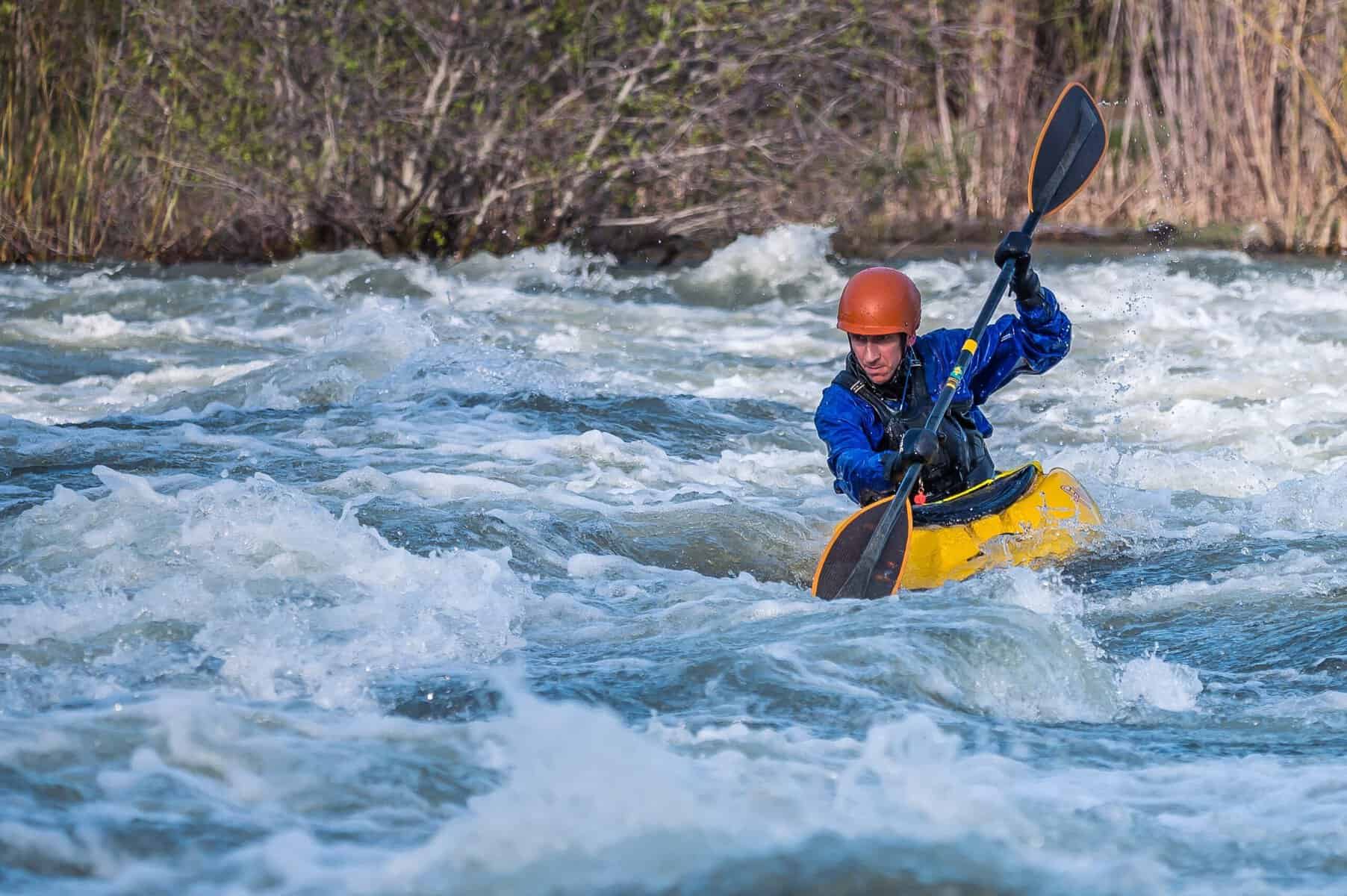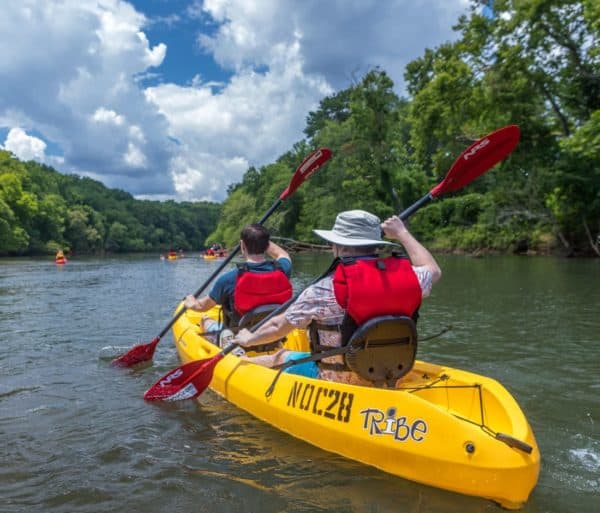River kayaking is an exhilarating sport that allows individuals to navigate through the powerful currents and rapids of rivers.
As an avid river kayaker, I have come to appreciate the importance of mastering this sport. It not only provides a thrilling adventure but also requires a deep understanding of the basics, proper equipment, paddling techniques, and safety measures.
Key Takeaways
- Understanding the basics of river kayaking is crucial for beginners to build a strong foundation.
- Choosing the right kayak and equipment is important for comfort and safety on the river.
- Learning proper paddling techniques is essential for efficient and effective movement on the water.
- Understanding river currents and hazards is necessary for safe navigation and decision-making.
- Building strength and endurance, practicing safety measures, and mastering advanced techniques are key steps towards becoming a pro river kayaker.
Understanding the Basics of River Kayaking
River kayaking involves maneuvering a small boat called a kayak through various types of rivers. It requires skillful navigation and control as you encounter different water conditions such as rapids, eddies, and waves. To embark on this exciting journey, it is crucial to understand the basics.
There are different types of rivers suitable for kayaking, ranging from calm flatwater to challenging whitewater rapids. Flatwater rivers are ideal for beginners as they offer gentle currents with minimal obstacles. On the other hand, whitewater rivers provide more adrenaline-pumping experiences with fast-moving water and obstacles like rocks or fallen trees.
To get started in river kayaking, you will need some basic equipment such as a kayak paddle, personal flotation device (PFD), helmet, spray skirt (for whitewater kayaking), drysuit or wetsuit (depending on water temperature), and appropriate footwear for grip in your kayak.
Choosing the Right Kayak and Equipment
Choosing the right kayak is essential for an enjoyable river kayaking experience. Factors such as your skill level, intended use (recreational or whitewater), body size/weight should be considered when selecting a kayak model that suits you best.
Recreational kayaks are wider and more stable than their whitewater counterparts since they are designed for calm waters like lakes or slow-moving rivers. Whitewater kayaks are narrower with more rocker (upward curve) on their hulls to enhance maneuverability in turbulent waters.
In addition to the kayak, there are other essential equipment items you should have. A well-fitted PFD is crucial for safety, as it keeps you afloat in case of capsizing. It is also important to maintain and care for your equipment properly. Regularly inspect your kayak for any signs of damage or wear and tear, clean it after each use, and store it in a dry place away from direct sunlight.
Learning Proper Paddling Techniques
| Technique | Description | Benefits |
|---|---|---|
| Forward Stroke | A basic stroke used to move the kayak forward. | Efficient movement, increased speed. |
| Reverse Stroke | A basic stroke used to move the kayak backward. | Controlled movement, ability to maneuver in tight spaces. |
| Sweep Stroke | A wide, sweeping stroke used to turn the kayak. | Increased turning ability, improved control in rough water. |
| Draw Stroke | A stroke used to move the kayak sideways. | Ability to move laterally, useful for docking or avoiding obstacles. |
| J-Stroke | A stroke used to keep the kayak moving straight. | Efficient movement, reduced need for constant correction. |
Mastering proper paddling techniques is fundamental to becoming a skilled river kayaker. Basic paddling techniques include forward stroke, reverse stroke, sweep stroke (used for turning), draw stroke (used for moving sideways), and brace strokes (to maintain balance).
As you gain experience and confidence on the water, you can progress to advanced paddling techniques such as eddy turns (entering or exiting an eddy), ferrying (crossing the river diagonally), surfing waves or holes (using their energy to maneuver), and rolling (recovering from a capsized position without exiting the kayak).
To improve your paddling skills, practice regularly in different river conditions. Seek guidance from experienced kayakers who can provide valuable tips based on their own experiences.
Understanding River Currents and Hazards
Understanding river currents and hazards is crucial for safe navigation during kayaking trips. River currents can be classified into three main types: slow-moving currents with minimal obstacles; moderate-speed currents with some rapids; fast-moving whitewater rapids with powerful waves.
When navigating through different river conditions, it’s important to read the water ahead of you by observing its color changes or surface features that indicate potential hazards like rocks or submerged trees.
Safety measures should always be taken when kayaking in hazardous conditions such as high water levels or strong currents. Always wear your PFD securely fastened at all times while on the water. Carry essential safety gear like a whistle, throw bag/rope, and a first aid kit. It is also advisable to paddle with a group or inform someone about your planned route and estimated return time.
Building Strength and Endurance for River Kayaking
Physical fitness plays a significant role in river kayaking. Building strength and endurance will not only enhance your performance but also reduce the risk of injuries.
To improve your strength, incorporate exercises that target the muscles used in kayaking such as core muscles (abdominals, obliques), back muscles (latissimus dorsi), shoulder muscles (deltoids), and arm muscles (biceps, triceps). Exercises like planks, Russian twists, pull-ups, push-ups, and shoulder presses can be beneficial.
Endurance training is equally important to sustain long hours on the water. Engage in activities like swimming or cycling to improve cardiovascular fitness. Gradually increase the duration of your workouts to build stamina over time.
Developing Your River Navigation Skills
Developing river navigation skills is essential for planning safe routes during kayaking trips. Learning how to read a river map will help you identify landmarks, gauge distances between access points or campsites along the riverbank.
When planning your route, consider factors such as water levels (high or low), potential hazards like strainers (obstacles that allow water through but trap solid objects), portages (carrying your kayak around obstacles) if necessary.
Navigation techniques vary depending on different river conditions. For example, when paddling downstream on fast-moving rapids with waves breaking over rocks called “hydraulics,” it’s important to choose an appropriate line that avoids these hazards while maintaining control of your kayak.
Practicing Safety Measures on the River
Practicing safety measures should always be a priority when engaging in river kayaking activities. Always wear appropriate safety gear such as a PFD securely fastened at all times while on the water. Carry essential safety equipment like a whistle, throw bag/rope, and a first aid kit.
Staying safe on the river also involves being aware of your surroundings and potential hazards. Avoid distractions while paddling and maintain focus on the water ahead. Be mindful of changing weather conditions that can affect water levels or create strong winds.
In case of an emergency, it is important to know what to do. Practice self-rescue techniques such as rolling back up after capsizing or performing a wet exit (exiting the kayak while submerged). Familiarize yourself with rescue techniques like T-rescues (assisting another kayaker back into their kayak) or throw bag rescues (throwing a rope to someone in need).
Mastering Advanced Kayaking Techniques
Once you have mastered the basic paddling techniques, it’s time to challenge yourself and push your limits by learning advanced kayaking techniques. These skills will allow you to navigate more challenging whitewater rapids with confidence.
Advanced paddling techniques include mastering eddy turns, where you enter or exit an eddy (a calm area behind an obstacle) by using precise paddle strokes and body positioning. Surfing waves or holes requires understanding how to use their energy effectively for maneuvering your kayak.
To improve your skills further, seek opportunities for continuous learning from experienced kayakers who can provide valuable insights based on their own experiences.
Learning to Read the River and Make Quick Decisions
Learning how to read the river is crucial for anticipating changes in water conditions and making quick decisions while kayaking. By observing surface features such as ripples, waves breaking over rocks, or changes in coloration of the water, you can anticipate potential hazards ahead.
Making quick decisions on the river requires staying calm under pressure and assessing situations accurately. Trust your instincts but also rely on your knowledge gained through experience and training.
Maintaining focus is key when faced with challenging situations. By staying calm and focused, you can make better decisions and react appropriately to changing river conditions.
Preparing for Longer and More Challenging River Trips
As you gain more experience in river kayaking, you may find yourself ready to embark on longer and more challenging river trips. Proper planning is crucial for these adventures.
When planning longer river trips, consider factors such as access points, camping options along the route, water levels during different seasons or weather conditions that may affect your journey.
Essential equipment for longer trips includes additional safety gear like a spare paddle or repair kit in case of damage to your primary paddle. Carry enough food and water supplies to sustain yourself throughout the trip.
To stay safe and comfortable on longer trips, practice good hygiene by packing appropriate toiletries like biodegradable soap or toilet paper. Dress in layers to adapt to changing weather conditions and protect yourself from sun exposure with sunscreen or a hat.
Finding a Community of River Kayakers for Support and Learning Opportunities
Finding a community of fellow kayakers is invaluable for support, learning opportunities, and sharing experiences. Joining kayaking groups or clubs allows you to connect with like-minded individuals who share your passion for this sport.
You can find kayaking groups through online forums or social media platforms dedicated to outdoor activities. Local kayak shops often organize group paddles where you can meet experienced kayakers who are willing to share their knowledge with newcomers.
Learning from experienced kayakers provides valuable insights into advanced techniques, safety measures specific to local rivers/conditions, as well as recommendations on equipment choices based on personal experiences.
In conclusion, mastering the art of river kayaking requires dedication but offers endless rewards in terms of adventure and personal growth. By understanding the basics of river kayaking including types of rivers suitable for this sport along with essential equipment needed; choosing the right kayak model; learning proper paddling techniques; understanding river currents and hazards; building strength and endurance; developing navigation skills; practicing safety measures; mastering advanced techniques; learning to read the river and make quick decisions; preparing for longer trips, finding a community of kayakers for support, and continuous learning opportunities, you can become a skilled river kayaker.
Remember to always prioritize safety on the water by wearing appropriate safety gear, being aware of potential hazards, practicing self-rescue techniques, and staying calm in challenging situations. With each new adventure on the river, continue to learn from your experiences while enjoying the thrill that comes with exploring nature’s powerful currents.
FAQs
What is river kayaking?
River kayaking is a water sport that involves paddling a kayak on a river. It can be done for recreational purposes or as a competitive sport.
What are the basic skills required for river kayaking?
The basic skills required for river kayaking include paddling, steering, bracing, and rolling. It is also important to have good balance and be able to read the river.
What equipment do I need for river kayaking?
The equipment needed for river kayaking includes a kayak, paddle, personal flotation device (PFD), helmet, spray skirt, and appropriate clothing and footwear.
What are some safety tips for river kayaking?
Some safety tips for river kayaking include wearing a PFD at all times, paddling with a partner or group, knowing your limits and the limits of your equipment, and being aware of the weather and water conditions.
What are some common river kayaking techniques?
Some common river kayaking techniques include eddy turns, ferrying, surfing, and boofing. These techniques are used to navigate through different types of rapids and obstacles.
What are some popular river kayaking destinations?
Some popular river kayaking destinations include the Colorado River, the Gauley River, the Ottawa River, and the White Nile River. There are also many great rivers for kayaking in Europe, South America, and Asia.





